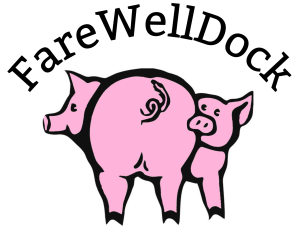Scientists from eight countries are starting a research project on how to prevent one of the major behavioural problems on commercial pig farms: tail biting. The aim of the collaboration is to yield new knowledge which will help to remove the need for tail docking, the currently widespread preventive practice of cutting off part of the tails of young piglets..
Why do pigs’ tails get damaged?
Tail biting is one of the major problems in modern pig production, both in terms of animal welfare and production economy. It is an abnormal behaviour that can result from several causes, such as stress, illnesses, a poor indoor air quality or competition for food or water. One of the main causes is lack of materials that the pigs can chew on or root. Pigs have a strong innate need for exploring their environment by chewing, biting, rooting and manipulating various objects and materials. When there are not enough exploration and manipulation substrate in a pen, the biting can get redirected to other pigs, especially ears and tails, which may result in tail biting.
In many European countries, tail docking – the practice of cutting part of the piglets’ tails at a young age – is used to control the problem. While this does reduce the risk of being bitten, it causes pain during cutting. Is also possible that, for the rest of their lives, damage to the tail nerves caused by docking may alter the sensitivity of the tail to touch. Some farmers, consumers, legislators etc. would like to stop the practice of tail docking. The EU pig directive states that tail docking can only be used if other means of preventing the behaviour have been tried. In some countries, for example Sweden, Norway and Finland, the practice of tail docking already is banned., These countries therefore provide an opportunity for testing other methods to prevent tail biting without the need to dock.
Searching for new knowledge on causes and prevention
The FareWellDock project is a three-year research project starting this autumn in eight countries: the UK, France, the Netherlands, Denmark, Sweden, Norway, Finland and the USA. The overall aim is to supply necessary information for quantitative risk assessment of tail biting, and to stimulate the development towards a non-docking situation in the EU.
The start-up meeting of the project took place on November 5 and 6 in Finland, after which the research will be carried out in three complementary international researcher activities. One group will delve into developing improved measures to prevent tail biting. An essential part is research into reasons for tail-biting outbreaks: which factors in the daily life on farms actually trigger this unnatural behaviour? This is work package 3 of the project. The group in work package 2 will investigate what quantity of straw, or other chewing and rooting materials, would be sufficient to satisfy the pigs’ need to explore and therefore reduce tail biting risk, and how to improve the feasibility of using straw on farms with different manure systems. The third group of scientists (work package 1) will focus on finding out what actually happens to the piglets that are tail-docked: how much pain piglets feel during docking, whether this results in longer-term pain and how this compares to the pain which is experienced by pigs which are tail bitten should an outbreak occur.
The project is led by Professor Anna Valros of the University of Helsinki in Finland. The other research institutes participating in the project are Scotland’s Rural College and Newcastle University in the UK, INRA in France, Aarhus University in Denmark, Wageningen UR Livestock Research in the Netherlands, SLU in Sweden, the Norwegian School of Veterinary Science and USDA-ARS in USA. The project is part of the European Animal Health and Welfare ERA-net initiative (ANIHWA), which aims at increasing cooperation of national research programmes on the health and welfare of farm animals.
Contact persons per country:
Prof. Anna Valros, University of Helsinki, Finland (overall coordination & work package 3)
Dr. Lene Juul Pedersen, Aarhus University, Denmark (leader of work package 2)
Prof. Sandra Edwards, Newcastle University, UK (leader of work package 1)
Dr. Jeremy Marchant-Forde, USDA-ARS, USA
Dr. Marc Bracke, Wageningen Livestock Research, The Netherlands
Dr. Stefan Gunnarsson, SLU, Sweden
Dr. Andrew Janczak, Norway
Dr. Armelle Prunier, INRA, France



